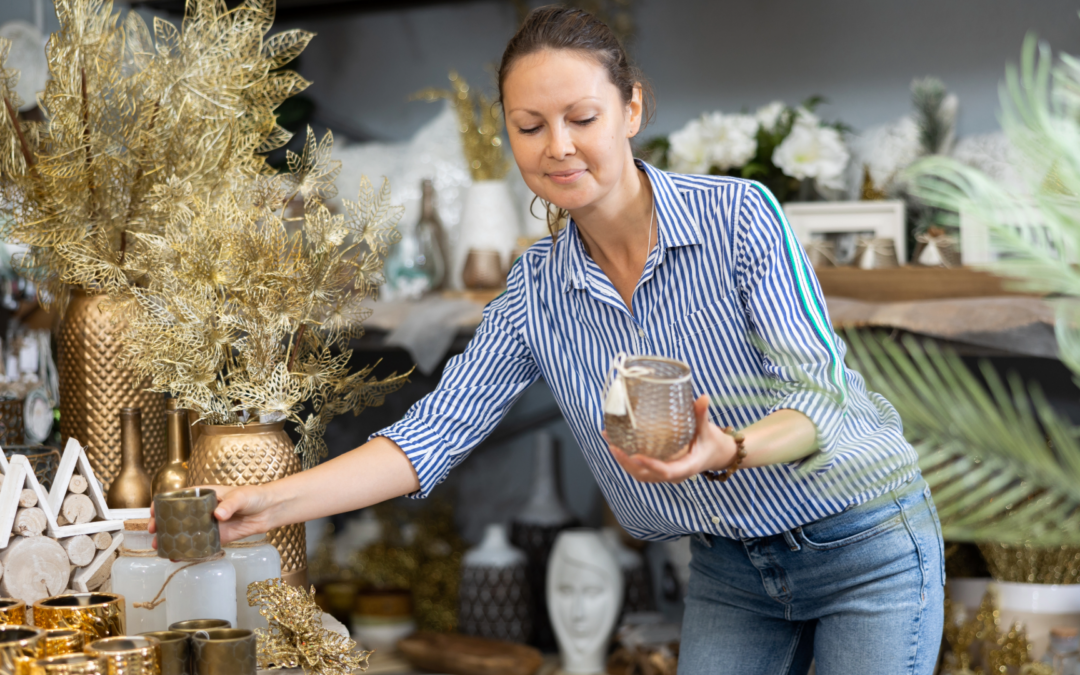Today’s consumers are price-conscious but that doesn’t mean they’re above showing themselves a little love. As home and housewares retailers look for ways to get a piece of the holiday shopping pie this year, they might want to think about giving shoppers something to give themselves.
Who
According to CivicScience, 32% of U.S. adults plan to buy themselves a holiday gift this year. That’s two percentage points down from December of 2022 and 2023, but the research firm points out their survey was in late September this year and that a good number of respondents said they’re not sure yet (21%).
Shoppers 18-24 years-old are the most likely to self-gift (62%), followed by those 25-34 years-old (42%), 35-54 years-old (30%) and 55+ (21%). Women are more likely than men to participate in the trend.
In general, self-gifters tend to be bigger spenders. Of those who said they were planning to self-gift, 38% are planning to spend more during the holidays than last year, 40% said they will spend about the same and 22% said they’ll spend less. (That’s compared with 19%, 55% and 27% respectively for those who do not plan to self-gift.)
Why
With increasing attention on the importance of mental health and wellness, self-gifting has emerged as a form of self-care over the last few years. It’s become especially apparent on Valentine’s Day and during the winter holiday shopping season.
“Self-gifting for special occasions, such as Valentine’s (Day), is dependent on stress levels, in that those who experience more stress are more likely to purchase themselves a Valentine’s gift,” says Cathrine Jansson-Boyd, Ph.D., a consumer psychologist based at Anglia Ruskin University, Cambridge, UK, in an article in Psychology Today. This suggests “that when life throws a person off balance, they look for comfort in self-gifting.”
What
Self-gifting may make retailers think in the traditional sense of self-care and respond with personal care-type items. In the home space, that can take the form of aromatherapy, luxury bedding or spa-like items for the bathroom.
While there’s certainly demand for those items, don’t rule out other categories of home and housewares products. Anything that might give someone a lift in their daily life or seem like a treat is fair game.
It could be home décor or a textile that makes them smile, like this cheery Sunflower Splendor apron from Danica. Maybe it’s something like this self-watering herb garden from Japi Pottery that allows them to enjoy fresh herbs (without the care!) all winter long. Maybe it’s an upgrade to their daily coffee routine like the Concierge Elite Fully Automatic Bean to Cup Espresso Machine by the Smith Agency. Even a practical kitchen or cleaning item can be deemed a treat (especially if it’s an upgrade to what they have and it’s not a gift coming from someone else).
How
While product assortment is important (not to mention marketing and merchandising around it), retailers should look for ways to connect with shoppers who are price conscious but looking for reasons to indulge.
According to online sales platform Salsify, “Retailers can capitalize on the (self-gifting) trend by offering tailored promotions and discounts, such as buy-one-get-one-free offers and bundle deals, to incentivize self-spending” during the holidays.

